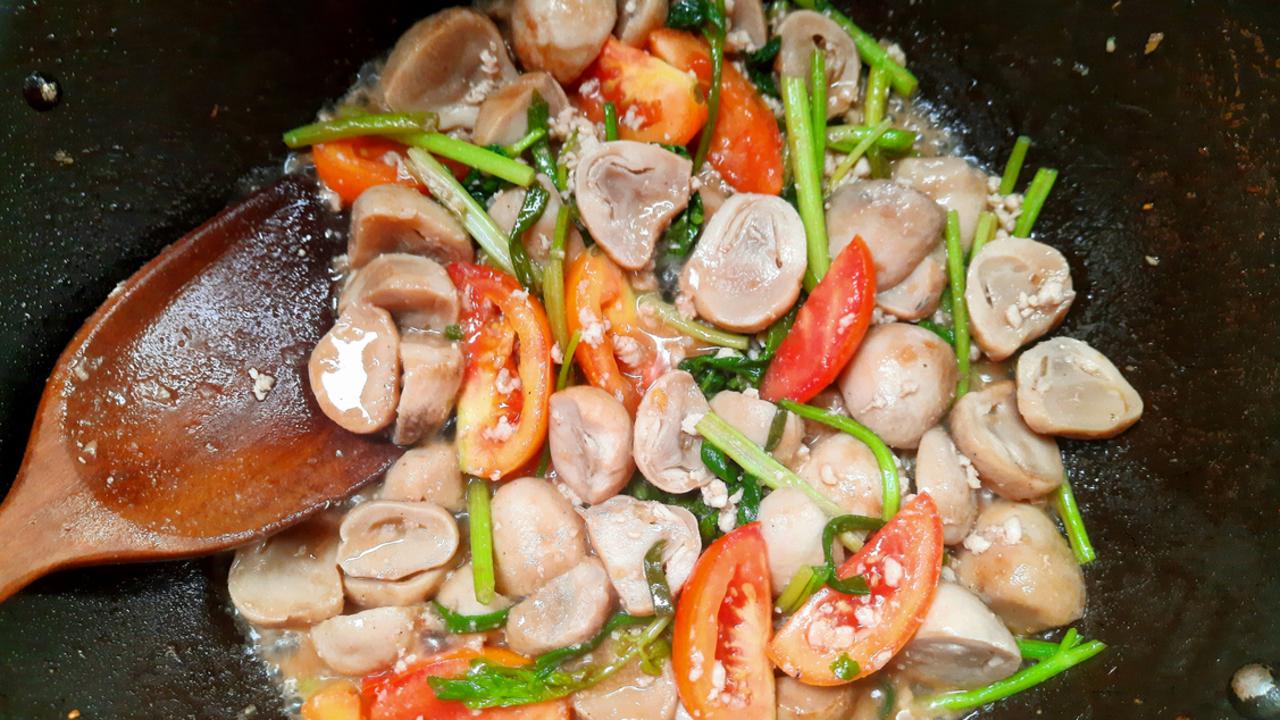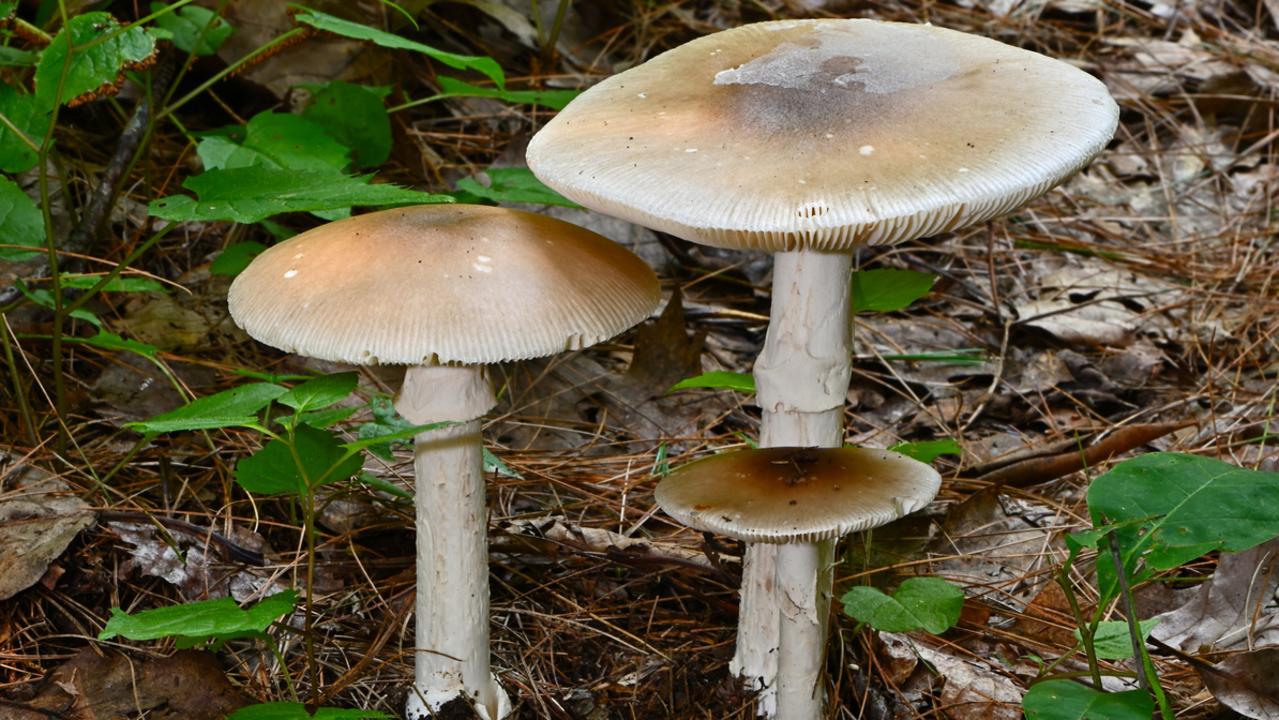Before the fatal death cap mushroom lunch in Leongatha, the fungi also killed two men in 2011
A fatal lunch has sparked urgent warnings over foraging for mushrooms, with the poisonous death cap fungi also killing two men in 2011.
A fatal Victorian mushroom lunch, which has killed three people and left another person fighting for their life, has sparked warnings from experts over the highly poisonous death cap mushroom.
While testing could take weeks, police a lunch cooked by Leongatha woman Erin Patterson, 48, on July 29 led to the deaths of her in-laws Gail and Don Patterson and Gail’s sister Heather Wilkinson.
As it stands, no charges have been laid and police are treating the deaths as “unexplained” and not suspicious. Erin has also maintained her innocence.

The case has sparked fresh concerns over death cap mushrooms that can resemble a straw mushroom when young or a white field mushroom when matured.
In 2011, they were also linked to the deaths of two Chinese migrant workers on New Year’s Eve.
Employees at the Harmonie German Club’s Chinese bistro in Canberra, chef Liu Jun, 38, and kitchen hand Tsou Hsiang, 52, both died of liver damage after ingesting a staff meal containing the death caps. Another man in his 30s was also hospitalised and later discharged.
At the time, a friend of Mr Liu told The Canberra Times that the chef had picked the death caps after work and mistook them for straw mushrooms (Volvariella volvacea), which are popular in Asian cuisine.
“Liu Jun, being a chef, he’s super into fresh food, and that’s part of the problem here,’’ Tom O’Dea said.
“You really just don’t expect that you make one mistake while eating something like that and be dead, and dead within 48 hours in the most horrible way.’’
Toxicologist: ‘Do not forage’
The renewed interest in poisonous mushrooms has led to toxicologist and University of Melbourne’s director of emergency medical research George Braitberg to issue a blunt warning against foraging in Australia.
“Do not forage for mushrooms in Australia,” he said.
“I know all the mushroom foragers would be angry at me for saying that, but that’s the perspective I have.
“It’s tragic (when a death) occurs because it’s really an avoidable death. People were just doing what they thought was a right thing to do. They were just trying to find some mushroom.”
According to figures from the Department of Health and Human Services Victoria, 19 people across the state were admitted to hospital this year due to mushroom poisonings, in figures dated to June 30.
In 2022, 23 people attended hospitals for the same reason, however the government department said figures may be subject to future updates.
65 people were hospitalised in 2020, however that number dropping to 35 in 2021.
Professor Braitberg said poisonings were most common among overseas travellers and immigrants who attempt to “translate their expertise into a different environment”.
“People who have been foraging in Europe or in Asia will assume the skills they have gotten overseas and the way they find mushroom will support them here in Victoria,” he said.
Professor Braitberg also said it was important to note that mushroom toxins were also “heat resistant” and weren’t removed by heat or through cooking.

Symptoms of death cap poisoning often set in within 24 hours as the body digests the mushroom, which in turn releases the amotoxin. In severe and fatal cases, this will cause the toxin to attack the liver, resulting in multi-system failure.
The symptoms could progress quickly, Professor Braitberg said.
“There’s no antidote, (so the potential for recovery) is going to depend on the patient themselves – how fit and healthy they are and also on how much they ingest,” he said.
“Then ultimately, if it progresses, the next question is liver transplantation.”
‘Can’t learn off the internet’
Victorian-based forager Richard Ford said apart from being similar to other mushrooms, the death cap’s appearance might also change depending on their stage of growth and the conditions in which they’re found in.
False parasol mushrooms are another type of poisonous fungi that can be mistaken for the edible parasol mushroom, however, they are foraged for less.
“Mushrooms vary on the ground and differ depending on the day and under different levels of sunlight,” Mr Ford said.
“The gills underneath a death cap mushroom can be the same colour as the gills on a field mushroom – that’s where I think people can get tricked a lot.”
The cuplike base at the stem of a death cap mushroom is another identifier; however, it may become dislodged once it is pulled from the ground.

Mr Ford warns there isn’t a “script” when it comes to identifying poisonous mushrooms from edible varietals, with factors differing significantly depending on the region.
“If you want to learn properly, you have to be face-to-face with someone. You can’t learn off the internet, you can’t learn off a photo,” he said.
“A lot of people turn on the phone and learn a little bit and think they can pick lots of different sorts of mushrooms.
“I’ve been doing this for 35 years, but in the beginning, I was so cautious.”
Speaking to media on Monday after the fatal Leongatha lunch, Detective Inspector Dean Thomas also warned people not to eat wild mushrooms.
“I do ask people out in the community to think about mushrooms they may have picked out in paddocks, farms, whatever they may be. Please think about whether you should eat them,” he said.
“My suggestion is if you haven’t purchased them in a supermarket, perhaps stay clear of them.”



